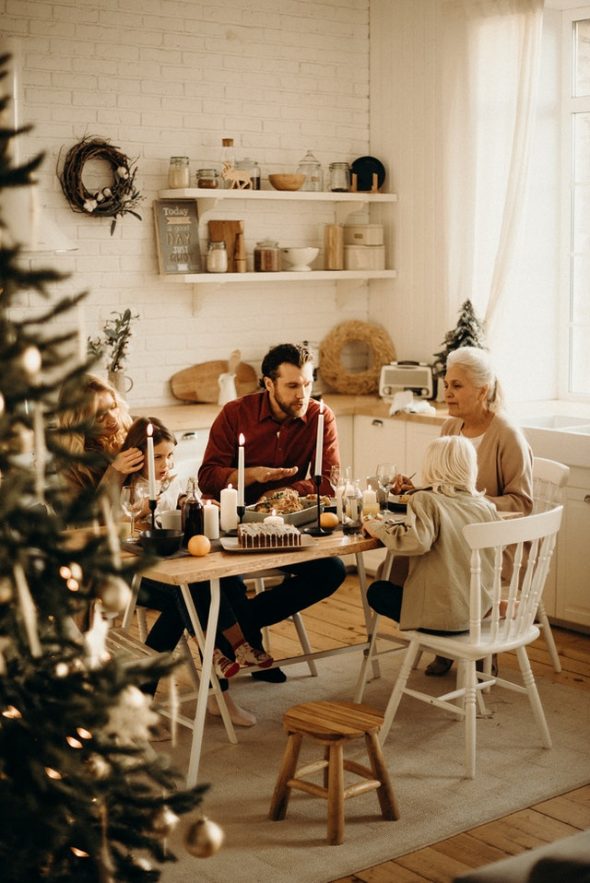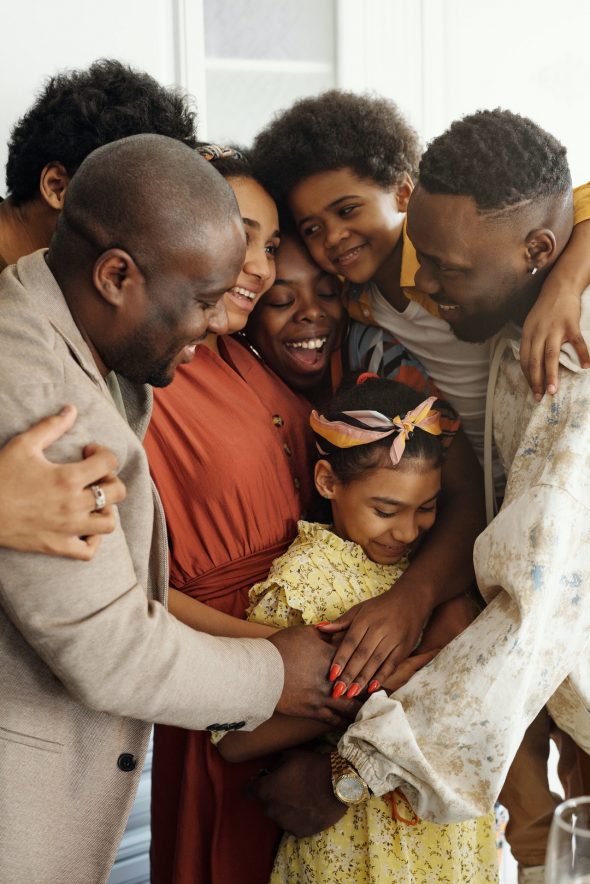Holiday Season Is Coming! Here Are The CDC Guidelines On The Safest Way To Celebrate

The holiday season is fast approaching and for many that means celebrating with family, loved ones and friends. How do we do that in the middle of a pandemic that is especially brutal for those suffering from pre-existing conditions (sometimes unbeknownst to the individual)? As always, each person should consult their personal physician. After that we can refer to the guidelines provided the The Centers for Disease Control and Prevention.
According to the CDC, “These considerations are meant to supplement—not replace—any state, local, territorial, or tribal health and safety laws, rules, and regulations with which holiday gatherings must comply. When planning to host a holiday celebration, you should assess current COVID-19 levels in your community to determine whether to postpone, cancel, or limit the number of attendees.”
Experts recommend learning about the level of community spread as a determining factor in planning an event that includes people from outside of your own home. For Tennessean’s a great resource is the Tennessee Department of Health’s Epidemiology and Surveillance data web page. Lots of information that’s easily accessible. If you live in Virginia, check out the Virginia Department of Health’s Covid-19 Dashboard.
For general advice on gatherings, another resource to consider is the World Health Organization (WHO).
Just how can we safely celebrate? Here’s a snap shot of some of the CDC guidelines:
Virus spread risk at holiday celebrations
Celebrating virtually or with members of your own household pose low risk for spread. In-person gatherings pose varying levels of risk. Event organizers and attendees should consider the risk of virus spread based on event size and use of mitigation strategies, as outlined in the Considerations for Events and Gatherings. There are several factors that contribute to the risk of getting infected or infecting others with the virus that causes COVID-19 at a holiday celebration. In combination, these factors will create various amounts of risk, so it is important to consider them individually and together:
- Community levels of COVID-19 – Higher levels of COVID-19 cases and community spread in the gathering location, as well as where attendees are coming from, increase the risk of infection and spread among attendees. Family and friends should consider the number and rate of COVID-19 cases in their community and in the community where they plan to celebrate when considering whether to host or attend a holiday celebration. Information on the number of cases in an area can be found on the area’s health department website.
- The location of the gathering – Indoor gatherings generally pose more risk than outdoor gatherings. Indoor gatherings with poor ventilation pose more risk than those with good ventilation, such as those with open windows or doors.
- The duration of the gathering – Gatherings that last longer pose more risk than shorter gatherings.
- The number of people at the gathering – Gatherings with more people pose more risk than gatherings with fewer people. CDC does not have a limit or recommend a specific number of attendees for gatherings. The size of a holiday gathering should be determined based on the ability to reduce or limit contact between attendees, the risk of spread between attendees, and state, local, territorial, or tribal health and safety laws, rules, and regulations.
- The locations attendees are traveling from – Gatherings with attendees who are traveling from different places pose a higher risk than gatherings with attendees who live in the same area. Higher levels of COVID-19 cases and community spread in the gathering location, or where attendees are coming from, increase the risk of infection and spread among attendees.
- The behaviors of attendees prior to the gathering – Gatherings with attendees who are not adhering to social distancing (staying at least 6 feet apart), mask wearing, hand washing, and other prevention behaviors pose more risk than gatherings with attendees who are engaging in these preventative behaviors.
- The behaviors of attendees during the gathering – Gatherings with more preventive measures, such as mask wearing, social distancing, and hand washing, in place pose less risk than gatherings where fewer or no preventive measures are being implemented.
People who should not attend in-person holiday celebrations
People with or exposed to COVID-19
Do not host or participate in any in-person festivities, if you or anyone in your household
- Has been diagnosed with COVID-19 and has not met the criteria for when it is safe to be around others
- Has symptoms of COVID-19
- Is waiting for COVID-19 viral test results
- May have been exposed to someone with COVID-19 in the last 14 days
- Is at increased risk of severe illness from COVID-19
People at increased risk for severe illness
If you are at increased risk of severe illness from COVID-19, or live or work with someone at increased risk of severe illness, you should
- Avoid in-person gatherings with people who do not live in your household.
- Avoid larger gatherings and consider attending activities that pose lower risk (as described throughout this page) if you decide to attend an in-person gathering with people who do not live in your household. – https://www.cdc.gov/coronavirus/2019-ncov/daily-life-coping/holidays.html#halloween

No matter how you and your loved ones end up celebrating, we wish you health and happiness and look forward to the day where hugs are a commonplace occurrence once again!





